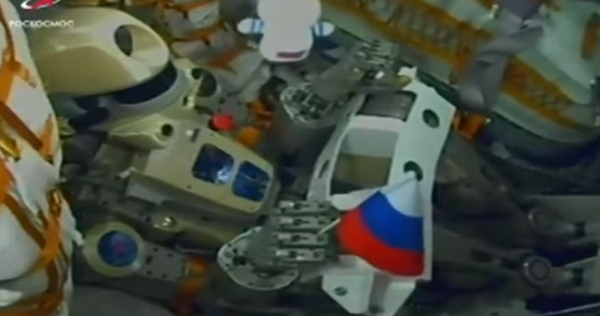
A colossal gaff does not require a punchline. Just ask the android pilot controlling the Soyuz capsule.
As the terrestrial world influenced by artificial intelligence painstakingly crumbles into particulate matter dusting the lifeless banks of the River Styx, enablement prevails. Another passenger should be driver was ungraciously captured on video and transported to the viral portal, as the individual slumbered through a series of dreams, while the self-driving car maintained speeds above 7o mph on a busy California highway. Fortunately, the person in obvious need of a reality check awakened and tragedy was averted, however, the troubling incident calls into question the current trajectory of automobile innovation, and if the human race possesses the necessary responsibility skill set to oversee the safe operation of automated traveling methods on the roadways.
Apparently, the dirty laundry list of problems associated with sentient technology is not confined to the surface of the earth, as the obsession with robotic vehicle control has extended past the boundary of the atmosphere and into space. The crazed reputation of the stereotypical Russian engineer in all the glory of misguided brilliance was on full display, as an automated Soyuz space probe hosting a robotic astronaut failed to execute a docking maneuver with the International space station, leaving mission control and crew members scrambling to salvage the operation.
The absence of a human pilot was an obvious contributor to the mishap, and CBS news reports that a digital handshaking device within the space station malfunctioned, effectively wiping out the proximal guidance system. Any number of political heads lacking vivacious personalities on both sides of the ideological ledger would have made better spacefarers than an inadequate bot, and would justify the lack of term limits in enduring three g’s of thrust smack in the middle of Soviet central Asia.
While the debate does not extend to the ridiculous threshold of the horse versus the automobile, the prevalence of complex redundant systems with too many moving parts in leading to fatal flaws as drivers, pilots and astronauts struggle to execute simple functions, as AI’s are given more responsibilities, leads to questions surrounding the abandonment of K.I.S.S. dogma or keep it simple stupid. The tendency towards the blatant overengineering of previously rock solid and reliable infrastructure with the current offering of available innovative software and solid state technology is cruel fate in a world that is literally changing at the speed of light. While certain industries and mechanisms are conducive to a complete digital overhaul, burdening the transportation network with untested and work in progress upgrades transcends common sense, especially when lives are potentially at stake.
Whether it’s a passenger aircraft, self-driving vehicle, or a space probe, the best bet for safe performance is still a highly trained and functioning human being with the ability to adapt instantaneously crafted through eons of rugged evolutionary sculpting. However, creatures of the flesh and blood are not blameless in the balanced equation dictating the relationship between the executive decision maker and the device. With the continued presence of the criminal element threatening any system connected to the digital matrix, human kind is simply not ready to receive and interface with the remarkable electronic gifts stretching the expanse of possibilities. Until the groveling impudence of a stubborn juvenile matures into a practical adult, the thoughts of centuries of lifespans, floating cities, and androids shall remain dreams, as the world continues to sort things out.
Throughout history, risks have sparked revolutionary discoveries in pushing the envelope, but with the acquired knowledge and data at the fingertips of the decision makers today, the art of balancing sensibility with innovative requires the inclusion of the “calculated” next to gamble an infusing stewardship into the process. The warning signs are there, and it is not too close to the stroke of midnight to right the ship with the assistance of a strong-willed and diligent pilot embracing safety.
Read the CBS news story here.
This editorial made possible by Duckduckgo.com